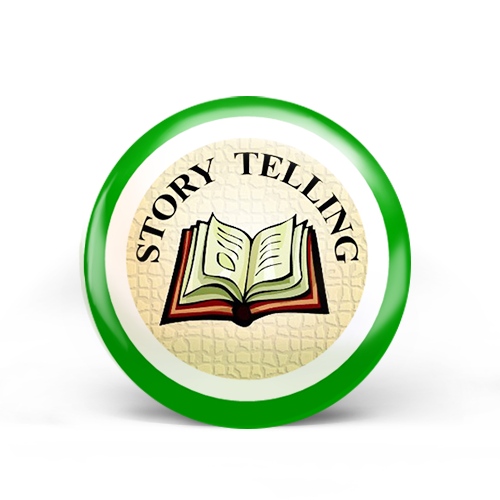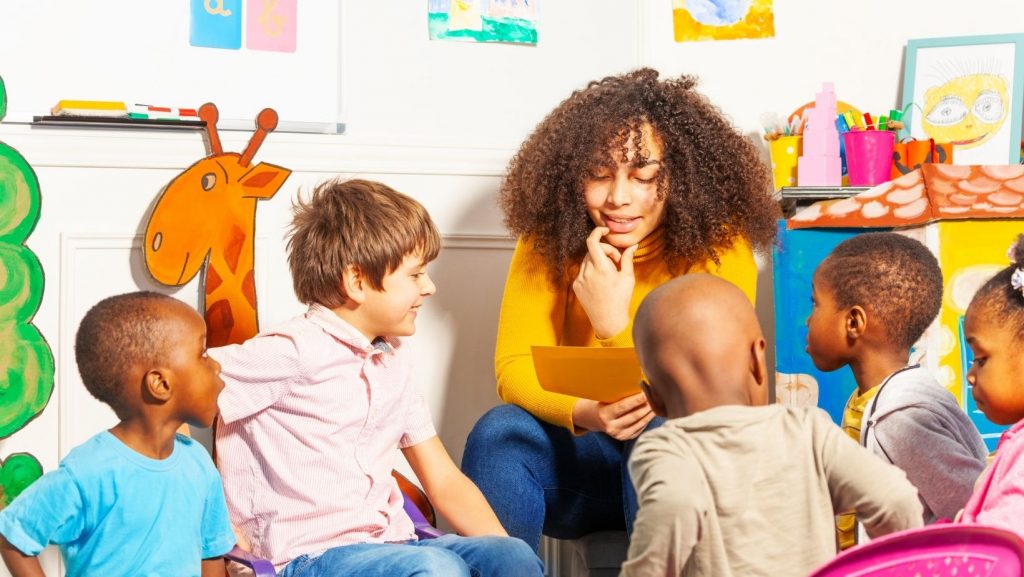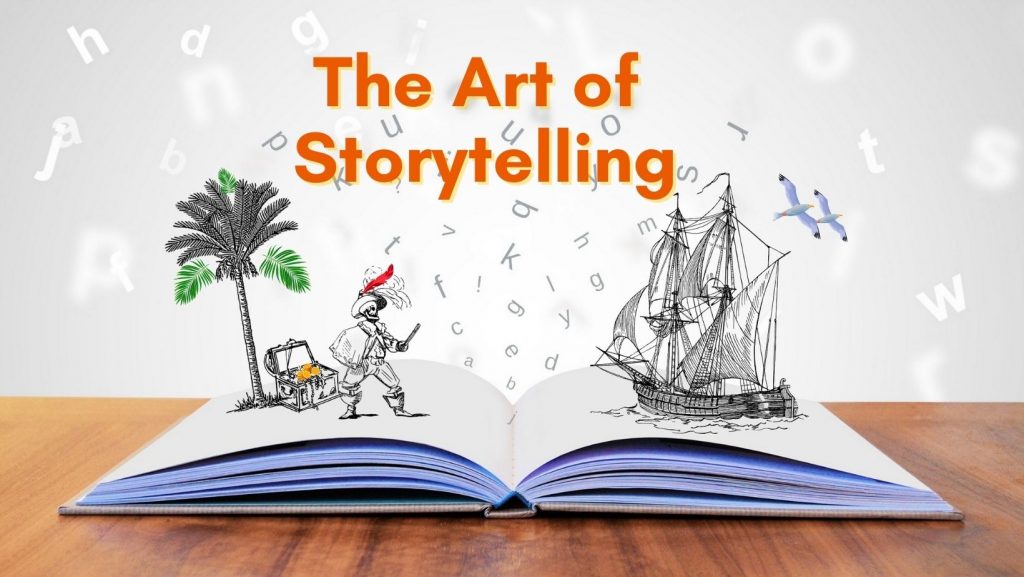
Story Telling Unit Study and Badge Resources
The story telling unit study and lesson plans below will help you earn your Story Telling badge. Other badges you may wish to earn alongside include badges such as the Writing badge, Books badge, Singing badge, Song Writing badge, or Drama badge.
1. Why Do We Tell Stories?
The stories each of us have to tell is what makes us human. Some stories are based in reality and are meant to record history or events, while others are imaginary and are meant to inspire or entertain. Many people think that the gift of storytelling only belongs to writers, teachers, and the elderly. But this is a skill that should be encouraged even in the very young. Learning to tell stories helps to improve social, emotional and cognitive development, especially communication and literacy.
Stories come in a variety of different forms and mediums such as poetry, books, song, movement, pictures, movies and plays. Not every story is written down. Some are told verbally from generation to generation. Others are sung or acted out. Some stories are short-lived, we hear them or experience them and then they are gone. Other stories endure for centuries through oral tradition or when we write them down or record them in some way so we can revisit them over-and-over again.
To Do: Make a list of stories that have been told in more than one way. For example, the story or Hercules has been told verbally for centuries, has been written into books, and even made into movies, plays and musical productions. Make a list of at least 10 other stories can you think of that are told in more than one form or medium. Listen to at least one story told in 3 different forms or mediums. A good example is the story of Cinderella. Read the original Grimm’s Fairytale version, then watch the Disney movie version and then the Rodgers and Hammerstein musical version. Which way did you enjoy the story the most? Why?
Fulfills Level 2 requirement #2 and Level 4 requirement #2

2. Oral Tradition
Oral Tradition is how information is passed down from generation to generation using only verbal words such as speech and songs. Stories in many cultures are so old they cannot be traced to the original telling.
To Do: Find 5 examples of well-known stories that have been handed down from generation to generation. These stories can be from your own family or culture, or from a culture you are learning about. What do you think makes these stories important enough survive over time? Do they teach an important lesson? Do they remind people of historic events? Try retelling one of these stories yourself.
In the past, many people could not read or write, so occupations like bards and troubadours, were created to make sure everyone heard the stories of their heroes, kept their genealogy straight, and taught their children important history and lessons . Did you know that people today still make their living from telling stories?
To Do: Learn about at least one person that tells stories for a living such as Vanessa Woolf, a story teller in England.
Fulfills Level 3 requirement #2

3. The Importance of Voice
When telling a story, it is important to use different tones in your voice. Have you ever heard a story told at a single volume with no fluctuation? It’s boring! Raising your voice higher or lower, changing the volume, and changing the pacing will make your story much more engaging.
To Do: Try reading paragraph of a story, any story. Keep your voice exactly the same the entire time. Don’t go high or low, loud or soft, fast or slow. Just say it flat. How did it sound?
Now say the sentence, “I want a cookie” in as many ways as you can think of. A few examples include:
- As if you were demanding a cookie from someone who won’t give you one.
- As a very little child who can’t reach the cookie
- As if you were very sad because all the cookies are gone
- As if you were making a list of things you want.
- As if you were wishing a cookie would appear.
Read the same paragraph again that you read at the beginning of the exercise. This time, use your voice in a variety of ways. Make it loud and soft, high and low, fast and slow. Do you hear the difference? Which way sounds better? When writing stories, since no one can hear your voice, you must use adverbs and a variety of verbs to create the voices in your story.
To Do: For each of the verbal examples listed above, come up with a written way of expressing how you said, “I want a cookie.” For example for the first example you might write, “I want a cookie!” she demanded loudly. Or for the second you might write, “I want a cookie.” he whined.

4. Tell a Verbal Story
One of the most personal resources for stories are friends and family. To Do: Listen to at least three stories told by your family or friends about something that happened to them or that they did. Which was your favorite and why? Discuss why some stories are better than others. Consider questions such as:
- Was it funny?
- Did it evoke an emotion?
- Did the words paint a picture in your mind so you could “see” the events?
- Did the story teller use body language to emphasize what was happening?
- Did the story teller modulate their voice to bring the story to life?
- Did the story teller keep the facts and events in the correct order?
Now try telling a story of your own that actually happened to you using what you learned from listening to others. Be sure to get all the facts right and in the correct order.
Fulfills preschool and Level 1 requirements #1 and #2.

5. Know Your Audience
When telling stories it is important to keep your audience in mind. An audience of educated adults will require a story be told in a much different manner than the same story told to a group of preschoolers.
To Do: Choose a story to tell to two very different audiences either verbally or in written form. Adjust the story appropriately for the audience you plan to share it with. A few things to consider:
- Vocabulary: Make sure to use words your audience will understand and relate to.
- Story Length: What is the attention span of your audience? Do you need to condense the story to make it go faster, or can you add extra details to lengthen it?
- Medium: What medium appeals to your audience? Telling the story using cartoons appeals to a different audience than telling the story via an opera. A picture book reaches a different audience than a chapter book.
Fulfills optional requirement #11

6. Same Story, Different Perspectives
There is an expression, “history is written by the victors.” Many times a story only tells one side and you only hear the story from a single perspective. But there are always two, or even more, sides to every story.
To Do: Listen to a story in real life told from two viewpoints. You may ask your parent to tell a story from their childhood and then ask a relative to give his or her version. How does the story change from each viewpoint?
To Do: Choose a favorite story and retell it from the perspective of a different character. For example, you might choose to retell Cinderella from the perspective of one of her step-sisters or even her stepmother. What would the story look like from the perspective of the prince?
Fulfills optional requirement #8
7. Fictional Tales
While some stories are meant to hand down factual information, others are told simply to entertain and inspire and can become quite fantastical.
To Do: Make up a story to tell and decide how you will tell it. Will you write it down? Tell it verbally? Sing it? Who is your audience?
Fulfils optional requirement #3

8. Bringing Stories to Life
There are many ways to bring stories to life and involve your senses. Choose one or more of the following options and use it
- Tell a story with puppets
- Act out your story with props or costumes
- Illustrate your story
- Make sound effects or compose music to go with your story
- Make a video of your story
Fulfils optional requirements #4, #6, or #7

9. Use Stories to Give Back to Your Community
Stories are part of every culture and community. Use the art of storytelling to give back to your community by doing one or more of the following.
- Record your story to send to a relative or friend or donate your recording to a nursing home or assisted living facility.
- Do a story time for a little kids’ club/classroom/library.
- Do a story time for adults in assisted living
- Tell a personal story to someone to show empathy or to help encourage them.
Fulfills optional requirements #5 or#12
10. The Moral of the Story
While most stories all have elements you can learn from, some stories set out to teach a specific moral. The Boy Who Cried Wolf is a perfect example where the purpose of the story is to teach kids that no one believes a liar, even when they are telling the truth. To Do: Read at least 3 stories that were written for the purpose of teaching a moral to the store. The Mom Loves Best website has a great article with 20 different stories that have morals.
To Do: Now write or tell a story of your own that has a moral to it.
Fulfills optional requirement #9

Follow our Facebook page for badge of the week posts and other resources. For planning purposes you can see which badges will be featured on our badge of the week calendar. You can also sort and search articles by topic on our main blog page. If you are not already a member, check out our membership pricing page.





